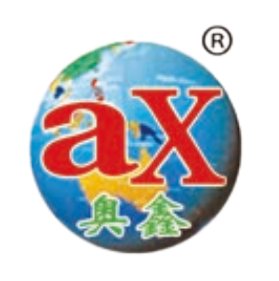Essential Paint Booth Maintenance for Peak Performance
Paint booth maintenance stands as the cornerstone of efficient finishing operations in any manufacturing or automotive facility. A well-maintained paint booth not only ensures superior coating quality but also promotes workplace safety and regulatory compliance. Understanding and implementing proper maintenance practices can significantly extend equipment life, reduce operational costs, and maintain consistent finishing results throughout the booth's service life.
Professional finishing operations depend heavily on their paint booths functioning at optimal levels. When maintenance is neglected, problems quickly cascade - from inconsistent paint application and contaminated surfaces to reduced airflow and potential safety hazards. By establishing and following a comprehensive maintenance program, facilities can avoid these pitfalls while maximizing their investment in finishing equipment.
Daily Maintenance Protocols
Filter Management and Replacement
The filtration system serves as the paint booth's first line of defense against contaminants. Daily inspection and maintenance of filters are crucial for maintaining optimal airflow and preventing overspray from contaminating the environment. Intake filters should be checked at the start of each shift, while exhaust filters require monitoring throughout the day, especially during heavy production periods.
Operators should document filter conditions and replace them according to manufacturer specifications or when they show signs of excessive loading. This proactive approach to paint booth maintenance prevents unexpected downtime and ensures consistent air flow patterns, which are essential for quality finishing results.
Cleaning and Surface Preparation
Daily cleaning routines form the backbone of effective paint booth maintenance. All interior surfaces, including walls, floors, and lighting fixtures, should be wiped down to remove overspray accumulation. Special attention must be given to areas where overspray tends to build up, such as corners and edges.
Using appropriate cleaning agents and tools designed specifically for paint booth maintenance helps preserve the integrity of booth surfaces while effectively removing contaminants. Regular cleaning prevents the release of trapped particles that could compromise finish quality and reduces the risk of fire hazards from paint residue buildup.

Weekly and Monthly Maintenance Requirements
Air Flow System Inspection
Regular assessment of the booth's air flow system is crucial for maintaining optimal performance. Weekly checks should include examining ductwork for potential blockages, inspecting fan belts for proper tension, and verifying that air pressure readings fall within specified ranges. These paint booth maintenance tasks help identify potential issues before they impact production.
Monthly inspections should delve deeper, including thorough examination of motor bearings, pulley alignment, and overall system efficiency. Maintaining detailed records of these inspections helps track performance trends and anticipate necessary repairs or replacements.
Lighting System Maintenance
Proper illumination is essential for achieving high-quality finishes. Weekly bulb inspections ensure consistent lighting levels, while monthly maintenance should include cleaning light fixtures and checking electrical connections. Paint booth maintenance for lighting systems should also involve measuring light intensity to ensure it meets industry standards.
Regular replacement of aging bulbs, even before failure, helps maintain optimal visibility and reduces the risk of unexpected lighting issues during critical painting operations. This proactive approach to lighting maintenance contributes significantly to finish quality and worker safety.
Quarterly and Annual Maintenance Procedures
Mechanical Systems Overhaul
Comprehensive quarterly inspections of all mechanical components ensure long-term reliability. This includes detailed examination of motors, bearings, belts, and pneumatic systems. Paint booth maintenance at this level often reveals wear patterns that might not be apparent during routine checks.
Annual maintenance should include complete system testing, calibration of control systems, and thorough inspection of all structural components. This deep-dive maintenance approach helps identify potential issues that could affect booth performance or safety in the coming year.
Compliance and Documentation Review
Regular review of maintenance records and regulatory compliance documentation is essential. Quarterly audits should verify that all required paint booth maintenance procedures are being performed and properly documented. This includes checking permits, updating safety protocols, and reviewing emergency response procedures.
Annual reviews should encompass a complete evaluation of the maintenance program's effectiveness, including analysis of downtime incidents, repair costs, and overall booth performance. This information guides future maintenance planning and helps justify necessary upgrades or replacements.
Emergency Maintenance and Troubleshooting
Common Issues and Solutions
Even with robust paint booth maintenance programs, unexpected issues can arise. Developing a comprehensive troubleshooting guide helps operators quickly identify and address common problems. This should include steps for diagnosing airflow issues, addressing temperature control problems, and managing humidity variations.
Training staff in basic troubleshooting procedures enables quick response to minor issues before they escalate into major problems. This proactive approach to paint booth maintenance reduces downtime and maintains consistent production schedules.
Emergency Response Procedures
Establishing clear emergency maintenance protocols ensures swift response to serious issues. This includes procedures for safely shutting down equipment, contacting authorized service providers, and implementing temporary measures to protect work in progress.
Regular review and updating of emergency procedures should be part of the overall paint booth maintenance strategy. This includes maintaining an updated list of critical spare parts and service provider contacts to minimize downtime during emergencies.
Frequently Asked Questions
How often should paint booth filters be replaced?
Filter replacement frequency depends on usage intensity and type of coating operations. Intake filters typically require replacement every 1-3 months, while exhaust filters might need changing weekly in heavy-use environments. Regular monitoring of pressure differential across filters provides the best indication of when replacement is necessary.
What are the signs that paint booth maintenance is overdue?
Key indicators include uneven air flow, decreased booth pressure, visible overspray outside the booth, inconsistent finish quality, and increased particle contamination in finished work. These signs suggest immediate maintenance attention is required to restore optimal performance.
How can I optimize my paint booth maintenance schedule?
Start by establishing a detailed maintenance log that tracks all routine and emergency maintenance activities. Use this data to identify patterns in equipment wear and performance issues. Adjust maintenance intervals based on actual usage patterns and environmental conditions rather than relying solely on manufacturer recommendations.

